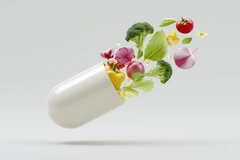Echinacea under scrutiny: New report exposes adulteration and mislabeling

The US Botanical Adulterants Prevention Program (BAPP) has released a new bulletin on echinacea (E. angustifolia, E. pallida, and E. purpurea) root and herb. The report summarizes previous scientific publications documenting nutraceutical products discovered to contain undeclared echinacea species, plant parts, and adulteration with Cistanche species.
Preparations made from the roots or herb of E. purpurea, or the roots of E. angustifolia and E. pallida, are widely used in herbal medicinal products for the prevention and treatment of upper respiratory tract infections.
Echinacea is also commonly formulated in topical applications to support wound healing. In 2024, echinacea supplements ranked second and fourth, respectively, among the top-selling herbal dietary supplements in the US mainstream and natural retail channels. The American Botanical Council’s (ABC) annual Herb Market report estimates the market was worth over US$168 million in combined sales.
“Most of the authenticity issues with echinacea dietary supplement products may be due to inadvertent blending of two echinacea species in the same batch or admixture of some aerial parts to roots,” explains Stefan Gafner, Ph.D., ABC chief science officer and director of BAPP.
“Nevertheless, there are some cases of economically motivated (i.e., intentional) adulteration. In particular, several industry members have noticed the sale of extracts from Cistanche species labeled as Echinacea angustifolia.”
He explains that desert broomrape (Cistanche deserticola), which is used in traditional Chinese medicine, is listed under CITES (Convention on International Trade in Endangered Species of Wild Fauna and Flora) Appendix II. This listing indicates that the species is protected and companies require a permit to trade it.
“Therefore, manufacturers that inadvertently sell desert broomrape as echinacea are violating not only current Good Manufacturing Practices for dietary supplements but also CITES regulations.”
Gafner co-wrote the BAPP bulletin with Sebnem Harput Döner, Ph.D., an expert in natural products chemistry and pharmacology in Istanbul, Turkey.
Long history of adulteration
Echinacea roots have a long history of being adulterated, previously with the roots of American feverfew (also called prairie dock). However, recent reports on echinacea product authenticity haven’t indicated any such adulteration with American feverfew (Parthenium integrifolium).
 Problems sometimes arise with echinacea herbal products, such as using the wrong species or mixing species in single-species claims.While most herbal products advertised as containing echinacea do contain it, problems sometimes arise, such as using the wrong echinacea species or including mixtures of species in products claiming to be single-species.
Problems sometimes arise with echinacea herbal products, such as using the wrong species or mixing species in single-species claims.While most herbal products advertised as containing echinacea do contain it, problems sometimes arise, such as using the wrong echinacea species or including mixtures of species in products claiming to be single-species.
Other concerns include undeclared leaf extracts mixed with root extracts, products primarily consisting of excipients like flowing agents or other manufacturing processing aids, and the adulteration of E. angustifolia extracts with Cistanche species extracts.
Consolidated data resources
The bulletin summarizes the available scientific data on adulteration and mislabeling of echinacea roots and herbs. It offers information about the uses, sourcing, supply chain, and market size of echinacea, along with a brief overview of the taxonomy, chemistry, and common methods of analysis.
It was peer-reviewed by 25 experts in quality control of medicinal plants from non-profit educational and research organizations, contract analytical laboratories, academia, botanical gardens, and the US and international herb industry.
“A native American medicinal plant, echinacea is one of the most popular herbs used therapeutically in North America,” says ABC founder and executive director Mark Blumenthal.
 Echinacea is one of the most popular herbs used therapeutically in North America.“Some species of echinacea — e.g., E. purpurea, or purple coneflower — are relatively easy to grow commercially and inexpensive, so there’s usually not much motivation for intentional adulteration and fraud,” he notes.
Echinacea is one of the most popular herbs used therapeutically in North America.“Some species of echinacea — e.g., E. purpurea, or purple coneflower — are relatively easy to grow commercially and inexpensive, so there’s usually not much motivation for intentional adulteration and fraud,” he notes.
“The new BAPP Echinacea bulletin is a useful quality control resource for responsible members of the global herb and dietary supplement industry to aid them in setting appropriate identity specifications for echinacea ingredients.”
The BAPP echinacea bulletin is the 31st publication in the series of BAPBs and the 96th peer-reviewed document published by BAPP. As with all BAPP publications, it is accessible on BAPP’s homepage on the ABC website.
BAPP previously published a bulletin flagging the adulteration and mislabeling of bacopa (Bacopa monnieri). In India, the herb is widely used as a cognition and memory supplement. It shares the common Sanskrit name brahmi with another plant of similar properties, gotu kola (Centella asiatica), which is often the root of confusion.












